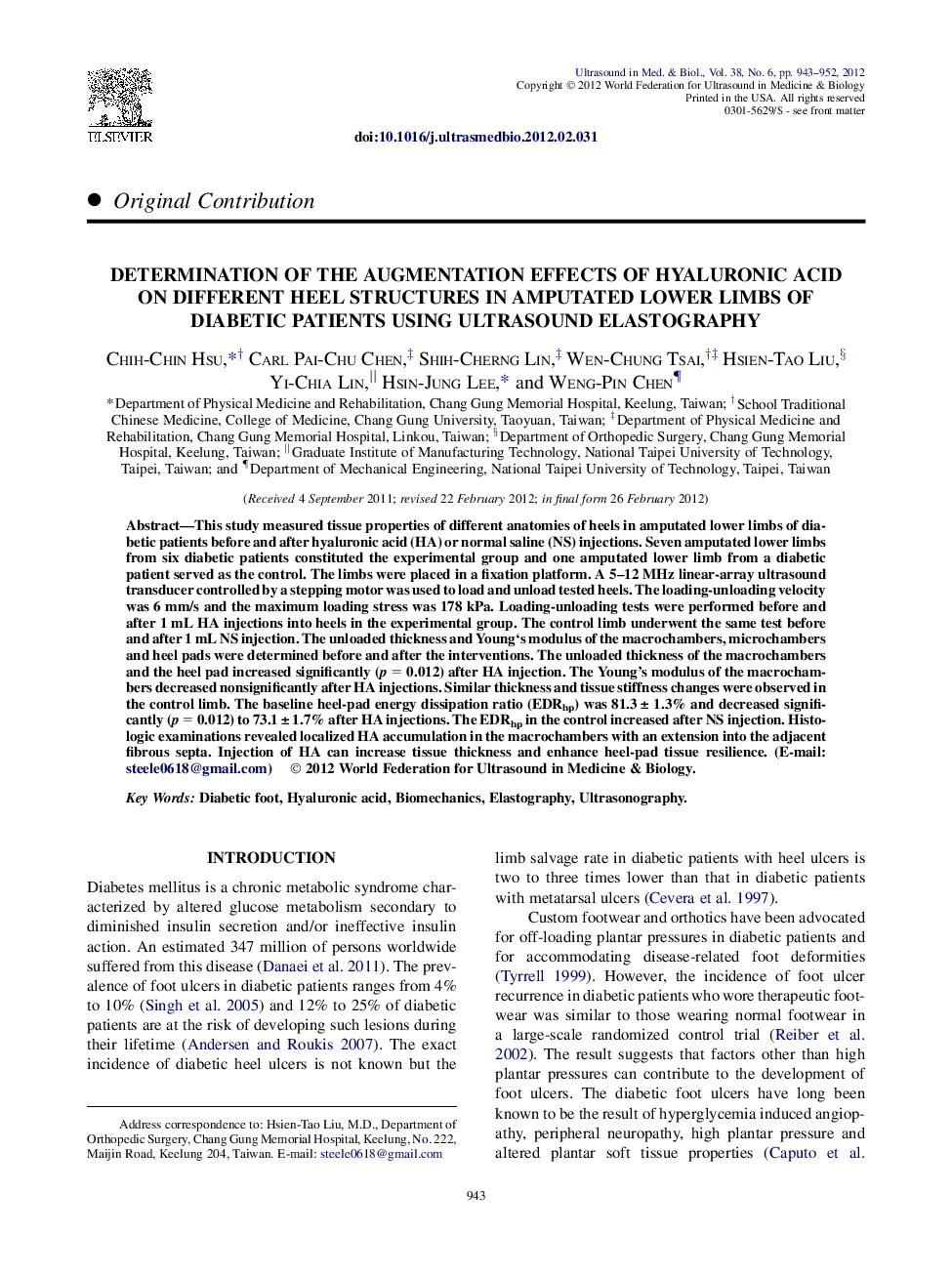| Article ID | Journal | Published Year | Pages | File Type |
|---|---|---|---|---|
| 1760569 | Ultrasound in Medicine & Biology | 2017 | 10 Pages |
Abstract
This study measured tissue properties of different anatomies of heels in amputated lower limbs of diabetic patients before and after hyaluronic acid (HA) or normal saline (NS) injections. Seven amputated lower limbs from six diabetic patients constituted the experimental group and one amputated lower limb from a diabetic patient served as the control. The limbs were placed in a fixation platform. A 5-12 MHz linear-array ultrasound transducer controlled by a stepping motor was used to load and unload tested heels. The loading-unloading velocity was 6 mm/s and the maximum loading stress was 178 kPa. Loading-unloading tests were performed before and after 1 mL HA injections into heels in the experimental group. The control limb underwent the same test before and after 1 mL NS injection. The unloaded thickness and Young's modulus of the macrochambers, microchambers and heel pads were determined before and after the interventions. The unloaded thickness of the macrochambers and the heel pad increased significantly (p = 0.012) after HA injection. The Young's modulus of the macrochambers decreased nonsignificantly after HA injections. Similar thickness and tissue stiffness changes were observed in the control limb. The baseline heel-pad energy dissipation ratio (EDRhp) was 81.3 ± 1.3% and decreased significantly (p = 0.012) to 73.1 ± 1.7% after HA injections. The EDRhp in the control increased after NS injection. Histologic examinations revealed localized HA accumulation in the macrochambers with an extension into the adjacent fibrous septa. Injection of HA can increase tissue thickness and enhance heel-pad tissue resilience.
Related Topics
Physical Sciences and Engineering
Physics and Astronomy
Acoustics and Ultrasonics
Authors
Chih-Chin Hsu, Carl Pai-Chu Chen, Shih-Cherng Lin, Wen-Chung Tsai, Hsien-Tao Liu, Yi-Chia Lin, Hsin-Jung Lee, Weng-Pin Chen,
